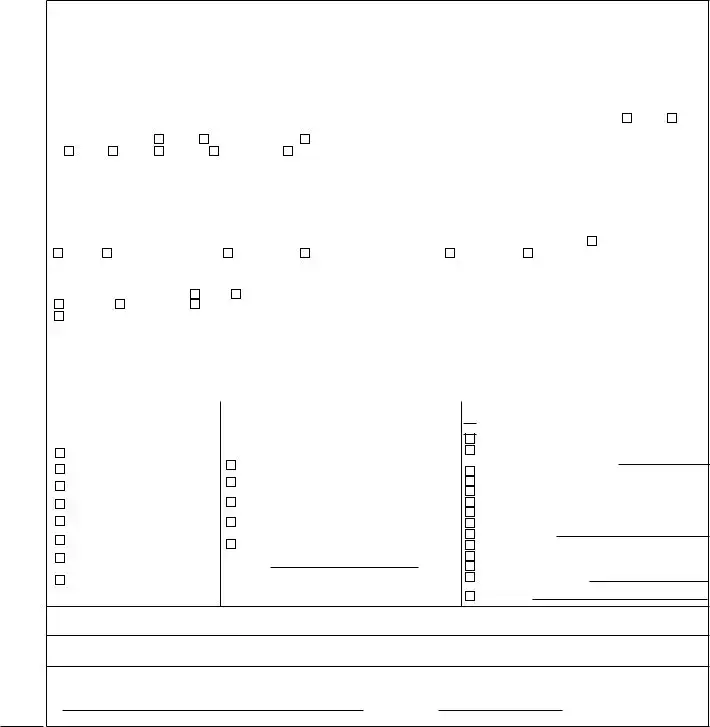The U.S. Standard Certificate of Death is a form that bears a striking resemblance to the DHEC 670C form, primarily because it serves the same essential function: recording vital information about an individual's death. Like the DHEC 670C form, it collects detailed information including the decedent's name, social security number, date and place of birth, as well as marital status, and parents' names. Additionally, it encompasses data on the cause of death, which is crucial for official records and statistical analysis. The layout and type of information requested are nearly identical, serving public health and legal requirements uniformly across different jurisdictions.
The Birth Certificate Application form is similar in its aim to document vital life events. Although it captures information pertaining to birth rather than death, its structure mirrors the DHEC 670C in collecting foundational identity information like name, sex, date of birth, and parents' names. This form's significance in officially recognizing an individual's identity from the moment of birth parallels the death certificate's role in formally acknowledging the end of life, highlighting the cyclical nature of vital records documentation.
A Marriage Certificate application is another document related to the DHEH 670C form, focusing on legally documenting the union between individuals. Similar to the section in the DHEC 670C that records marital status and spouse's name at the time of death, the marriage certificate solidifies spousal information into legal and public records. Both types of documents serve as official recognition of significant personal status changes, underscoring the interconnectedness of personal life events with public and legal acknowledgment.
The Divorce Decree is a legal document representing the dissolution of a marriage, and it can correlate with the marital status information found in the DHEC 670C form. In situations where a person has passed away and was divorced at the time of death, the existence of a divorce decree would have directly impacted the accuracy of the marital status reported on the death certificate. Both documents, in their respective capacities, serve as legal acknowledgments of significant changes in an individual's personal status.
The Last Will and Testament, while not a standard form like the DHEC 670C, shares a connection by involving critical post-life events and decisions. It details an individual’s wishes regarding the distribution of their estate and can also include funeral preferences, which might relate to the informant’s decisions on the method and place of disposition recorded on the death certificate. Though its content is more personalized and varied, both documents are crucial for the administration of an individual's affairs after death.
The Passport Application form, much like the DHEC 670C, requires detailed personal and demographic information about an individual, including name, date and place of birth, and parentage. While its purpose is to facilitate international travel during life, the depth of identifiable information it gathers shares common ground with the death certificate's role in documenting an individual's demise, underscoring identity verification in both contexts.
The Death Benefit Claim form, typically associated with life insurance or social security, requires submission of a death certificate, like the DHEC 670C, to process claims after an individual's passing. The claim form often requests information that mirrors the death certificate, such as the decedent's name, date of death, and cause of death, to verify the claim and determine eligibility for benefits. This procedural requirement emphasizes the operational role of the death certificate in broader administrative contexts beyond just registering death.
The Medical Examiner’s Report, while more focused on the cause and circumstances surrounding death, complements the information provided in the DHEC 670C form. Both documents are utilized in the case of unnatural or unexplained deaths, with the medical examiner's findings potentially influencing the official cause of death as recorded on the death certificate. This relationship underscores the collaborative nature of different documentation in achieving a complete and accurate account of death.


 White
White